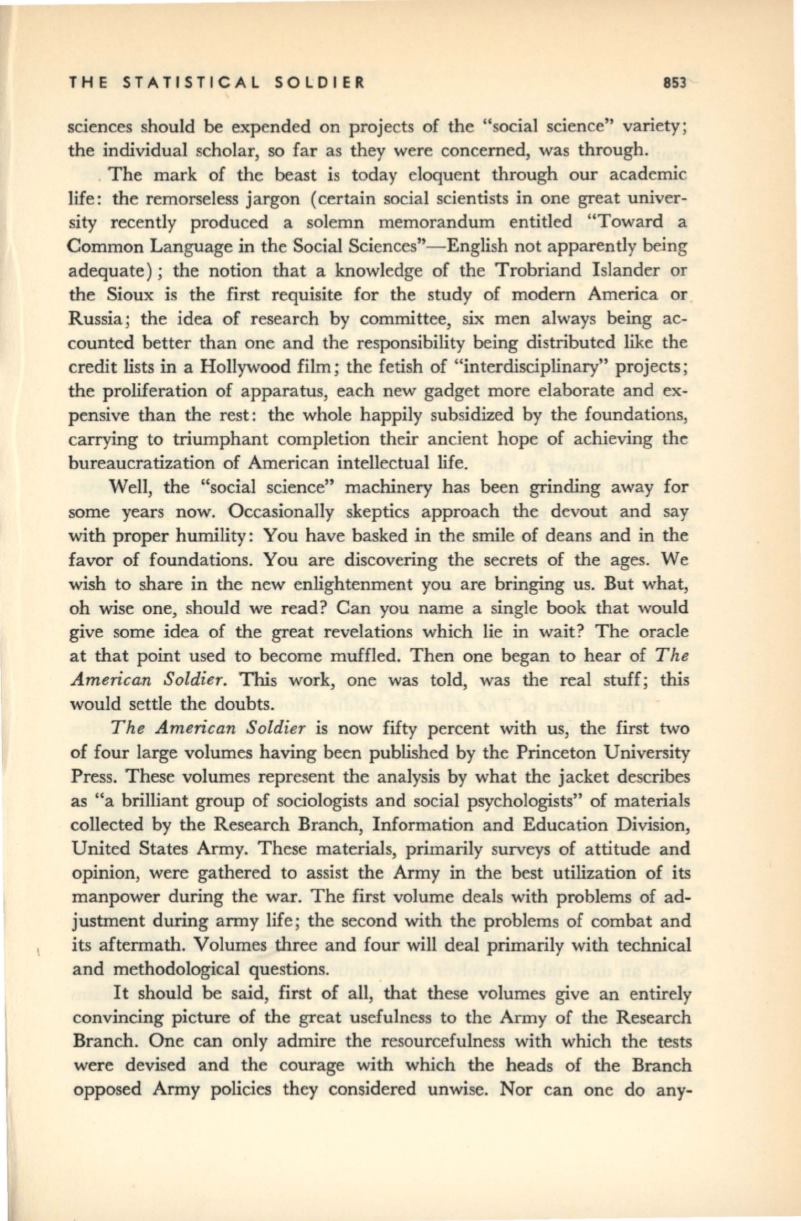
THE STATISTICAL SOLDIER
853
sciences should be expended on projects of the "social science" variety;
the individual scholar, so far as they were concerned, was through.
The mark of the beast is today eloquent through our academic
life: the remorseless jargon (certain social scientists in one great univer–
sity recently produced a solemn memorandum entitled "Toward a
Common Language in the Social Sciences"-English not apparently being
adequate); the notion that a knowledge of the Trobriand Islander or
the Sioux is the first requisite for the study of modern America or
Russia; the idea of research by committee, six men always being ac–
counted better than one and the responsibility being distributed like the
credit lists in a Hollywood film; the fetish of "interdisciplinary" projects;
the proliferation of apparatus, each new gadget more elaborate and ex–
pensive than the rest: the whole happily subsidized by the foundations,
carrying to triumphant completion their ancient hope of achieving the
bureaucratization of American intellectual life.
Well, the "social science" machinery has been grinding away for
some years now. Occasionally skeptics approach the devout and say
with proper humility: You have basked in the smile of deans and in the
favor of foundations. You are discovering the secrets of the ages. We
wish to share in the new enlightenment you are bringing us. But what,
oh wise one, should we read? Can you name a single book that would
give some idea of the great revelations which lie in wait? The oracle
at that point used to become muffled. Then one began to hear of
The
American Soldier.
This work, one was told, was the real stuff; this
would settle the doubts.
The American Soldier
is now fifty percent with us, the first two
of four large volumes having been published by the Princeton University
Press. These volumes represent the analysis by what the jacket describes
as "a brilliant group of sociologists and social psychologists" of materials
collected by the Research Branch, Information and Education Division,
United States Army. These materials, primarily surveys of attitude and
opinion, were gathered to assist the Army in the best utilization of its
manpower during the war. The first volume deals with problems of ad–
justment during army life; the second with the problems of combat and
its aftermath. Volumes three and four will deal primarily with technical
and methodological questions.
It should be said, first of all, that these volumes give an entirely
convincing picture of the great usefulness to the Army of the Research
Branch. One can only admire the resourcefulness with which the tests
were devised and the courage with which the heads of the Branch
opposed Army policies they considered unwise. Nor can one do any-


